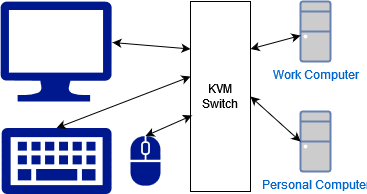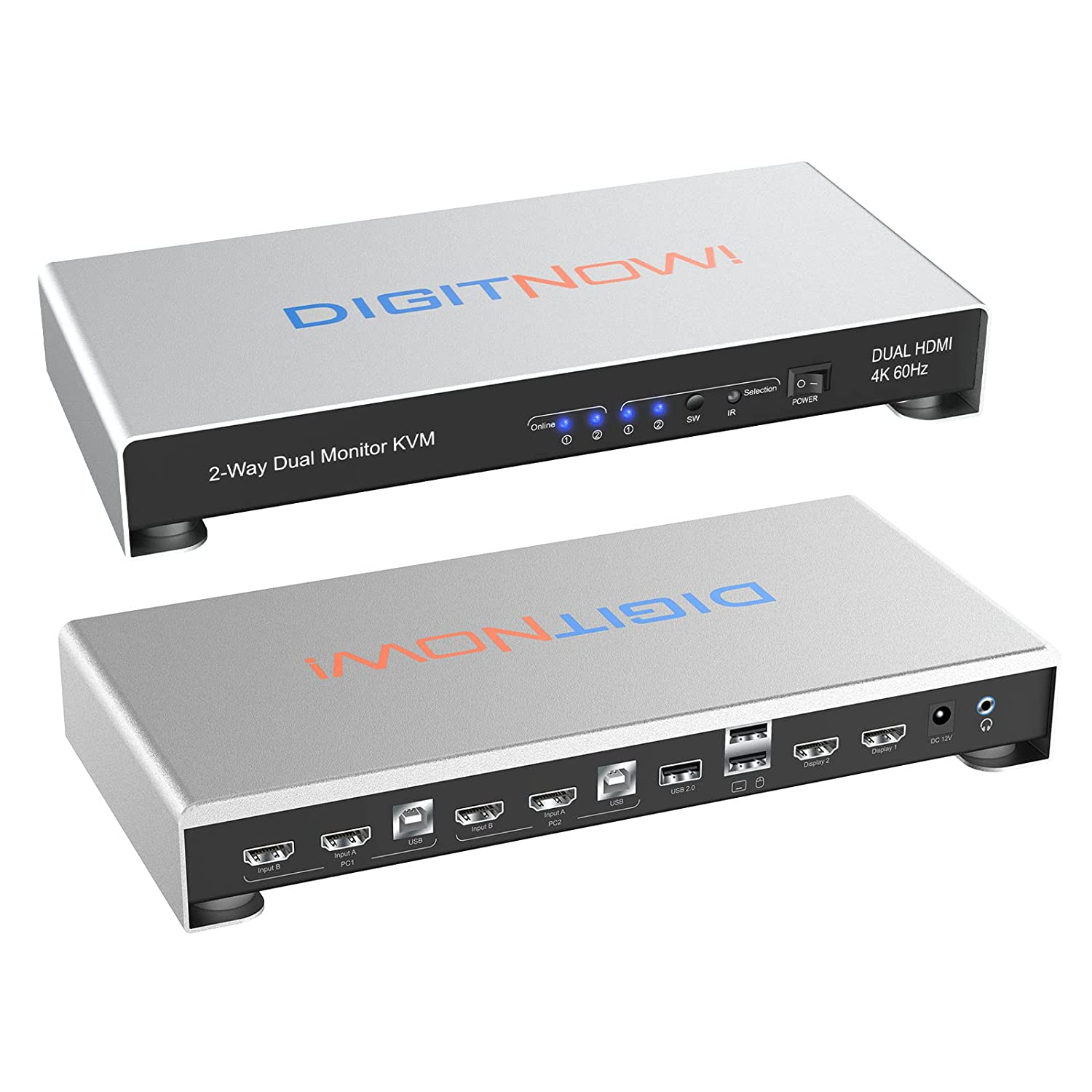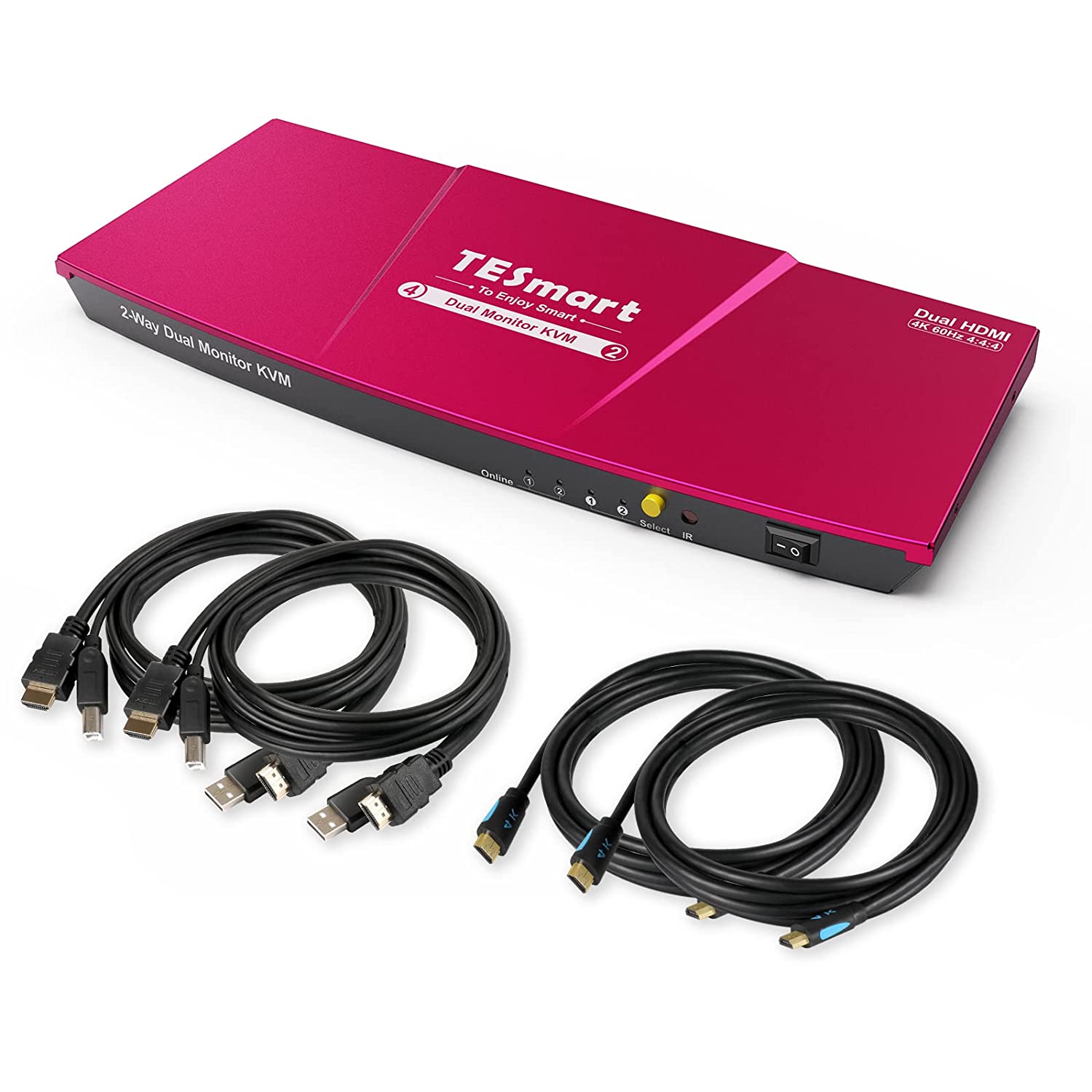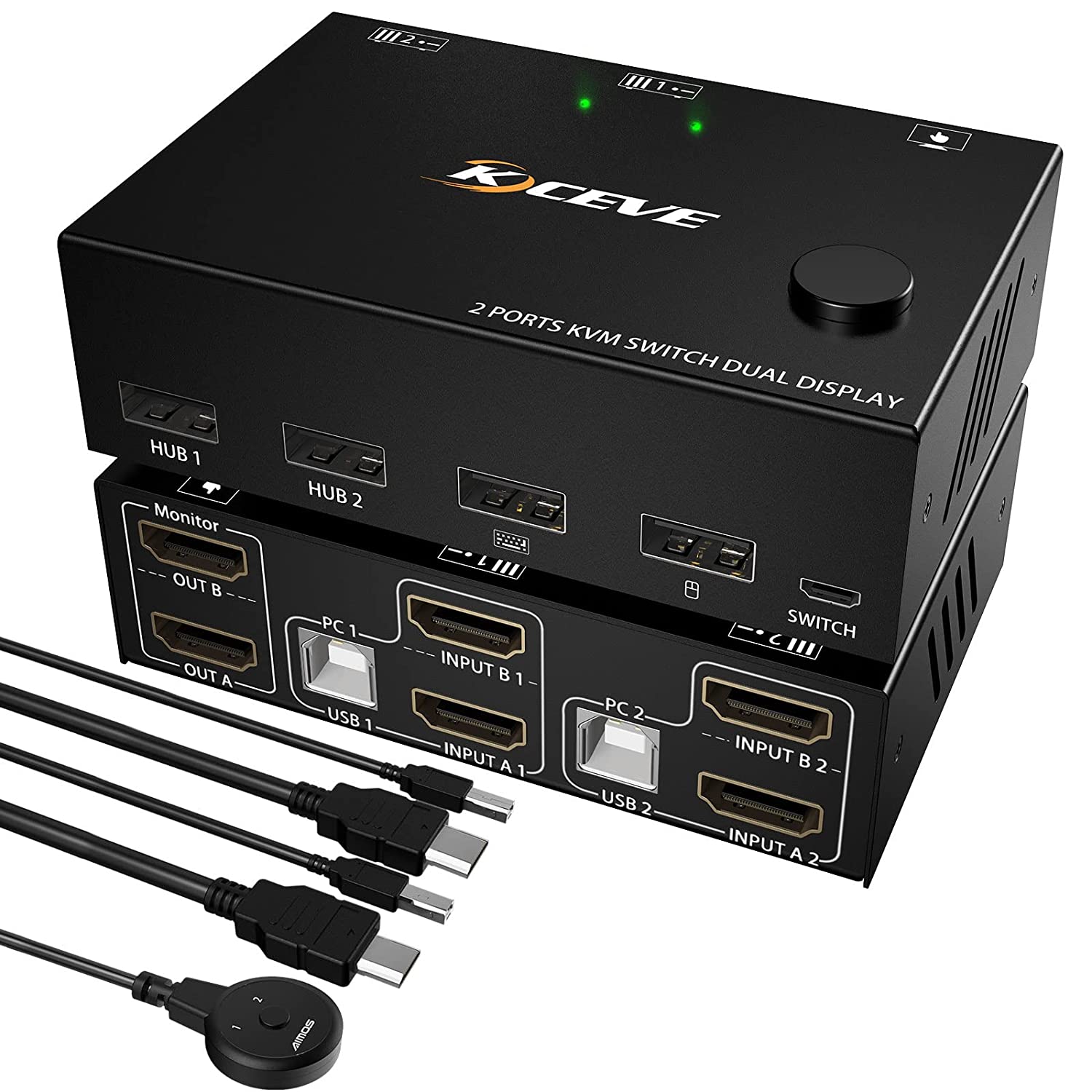As a programmer, you spend a lot of time looking computer screens. Many programmers agree that more screen real-estate equtes to more productivity. Intuitively this makes sense. Programming among other things is constant problem solving. Many developers joke that they don't program, they just Google stuff and then copy/paste the solution. To an extent, this is true. You find a similar solution but then synthesize a new solution specific to your problem. It's not often you copy/paste code without modification. If it is, then you're likely not developing something interesting. That said, you'll often have multiple windows open while you're working. When it comes to selecting a good KVM switch, you'll want a devices that supports multiple monitors.
If programming is your profession, you likely have multiple computers. At a minimum, you'll have a work computer and a personal computer. If you work remotely, then you probably have both machines set up at your desk ready to switch to your personal computer when 5 o'clock rolls around. Unless you like to spend time switch cables around, a KVM switch will provide a very convenient and fast way to switch between work and play.
What is a KVM switch?
A KVM switch is a device that allows a Keyboard, Video and Mouse (KVM) to be shared between multiple computers.

On one side of the KVM, you have a spot to plug in a keyboard, a monitor and a mouse. And on the other side, you have a spot to plug in two or more computers. Often times, a KVM switch will have other peripheral devices you can plug in like a USB drive or printer that can be shared between the mutiple computers you're connecting.
What is the best KVM swtich?
Every programmer's desk setup is different, so you will need to evaulate your own needs to make a proper KVM switch decision. For our purposes here, we will assum you're a programmer with the following needs:
- dual 2k monitors
- a USB-C 65% mechanical keyboard (click here for the best 65 keyboard)
- a USB mouse
- two computers
Here is a list of 3 great KVM options for programmers given the above criteria. After this list, you can read more information about choosing the best KVM switch for your needs.
1. DIGITNOW HDMI KVM Switch 2 Port Dual Monitor Extended Display
The DIGITNOW HDMI KVM Switch 2 Port Dual Monitor Extended Display is an excellent KVM switch for your typical programmer. It supports 4K resolution, dual monitors as well as USB 3.0 devices. Additional peripheral support for scanner, 3D printer, webcam and audio speakers.
Technical Specs:
- Brand: DIGITNOW
- Dimensions: 11" x 3" x 2"
- Color: Silver
- Weight: 2.75 lbs
2. TESmart HDMI KVM Switch 2 Port Dual Monitor Extended Display
The TESmart HDMI KVM Switch 2 Port Dual Monitor Extended Display is another great KVM switch for programmers. Support for two 4K monitors which is a typcial setup for a web development and other programming areas. Keyboard and Mouse passthrough allows for compatibilty with a wide variety of mechanical keyboards and gaming mouses often used by developers and programmers.
Technical Specs:
- Brand: TESmart
- Dimensions: 11.81" x 4.63" x 1.2"
- Color: Grey or Black or Red
- Weight: 1.32 lbs
3. MLEEDA Dual Monitor KVM Switch HDMI 2 Port 4K
The MLEEDA Dual Monitor KVM Switch HDMI 2 Port 4K is a tabletop KVM switch for programmers to connect up to two computers to share dual monitors. Typically, programmers will be running high resolution 4K monitors and this KVM switch supports via HDMI outputs. To switch between machines, programmers can use the physical push button switch on the top of the KVM switch.
Technical Specs:
- Brand: MLEEDA
- Dimensions: 3.98" x 2.56" x 1.18"
- Color: Black
- Weight: 1.12 lbs
What to look for in KVM Switches
KVM switches come in a variety of configuration but are specific to a certain kind of setup. As a programmer, or any kind of computer worker, you need to consider your particular setup. Especially regarding your keyboard and mouse connections as well as your monitor connection. If your peripherals, i.e. mouse and keyboard, connected via USB then you'll want a USB KVM. You'll also want to look closely at what version USB KVM switch you need. The best KVM switches will support the latest USB 3.0 rather than USB 2.0, but again this depends on your specific connections.
How Many Monitors do you have?
A lot of KVM switches support a single monitor to share with multiple computers. If you're a programmer, you likely have two or more monitors with your computer setup. If that is the case you want to find KVM switches that support dual monitors. The key phrase here is "dual monitor" or "dual display" and that will help find the right device for you. KVM switches that only support a single monitor won't work for you. Well, sort of...
If you monitors supports HDMI, you can get an HDMI KVM Switch and daisy chain multiple monitors together. Be sure that the HDMI KVM switch support HDMI 1.2 or higher as this version of HDMI supports daisy chaining. If you have high end monitors, such as multiple 4K 60HZ monitors, you'll have to select a higher end KVM. These high end KVM switches may require a specific power adapter to use external power to driver the high resolution video going to a daisy chained multiple monitor setup. Lower resolution monitors may not require any specific power supply requirements.
How Many Computers and Devices do you have?
It's not often with programming you have more that one computer you're working with. Most often, you'll have 2 computers so you'll want to find a 2 port KVM switch to connect each machine. In the event you have more than two machines, you'll need to spend extra money and pick among the 4 port KVM switches.
As a programmer, you may have multiple USB peripheral devices. Working from home? You likely have a USB camera and a USB micrphone that your comptuers share. Do you need a KVM that has two USB or 4 USB ports for peripherals? With a microphone, check that the KVM switch has audio support for your device.
Some KVM switches act as a USB hub to support multiple peripherals. Check your devices requirements for whether you need to support USB 2.0 or USB 3.0 connectors. Some older devices use a micro USB port, so if you need this type of connection, be sure to find a KVM switch that supports it.
Switching Between Computers
Some KVM switches have a physical push button as a switch selector. This push button switch allows you to change computers. Another options is a keyboard combination or set of hotkeys that allows you to move from one computer to another. This hotkey method to switch between machines is a good choice for programmers because often times programmers are more efficient in their work when their hands stay on the keyboard.
Look for a hotkey KVM switch that is driver free and doesn't require you to install special software on your machines. If you're a programmer working on a company issued machine, you may not be able to install the right drivers to get it to work. Best to find a plug and play KVM switch that works out of the box without any software to install.


